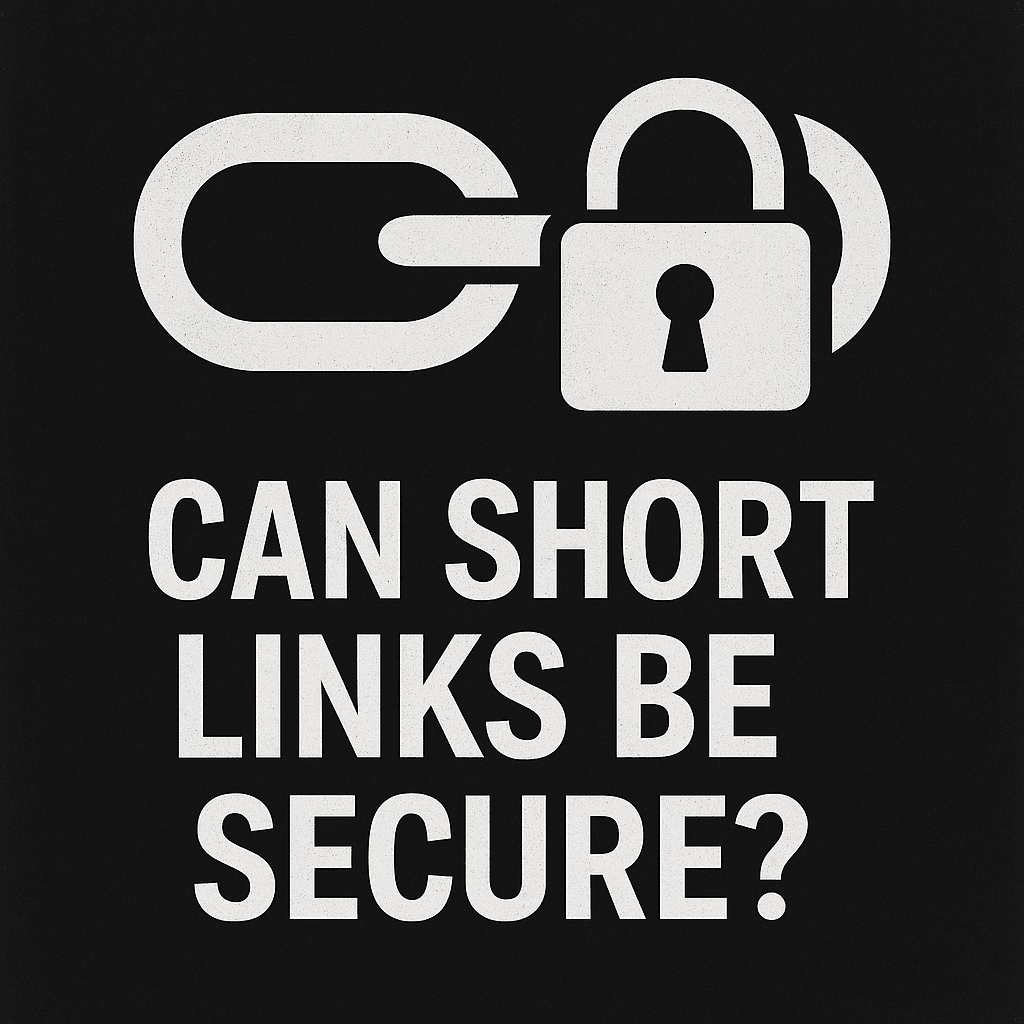Can Short Links Be Secure? What to Know in 2025
18.07.2025

Shortened links are everywhere — from social media bios to marketing emails. But as convenient as they are, many users ask: Can short links be secure in 2025? With phishing and URL spoofing risks increasing, platforms like shhr.ink are stepping up to offer password protection, auto-expiring links, and real-time security scanning to keep users safer than ever.
Let's break down how link shorteners are evolving and what you should look for when choosing a secure short link service.
🔐 Are Shortened Links Inherently Insecure?
Shortened URLs typically disguise the final destination, making them a common tool in phishing campaigns. Attackers often use generic shortening services to hide malicious pages.
But that doesn't mean all short links are dangerous. The security comes down to:
- The platform used to create the link
- The features offered (like password protection)
- How you manage and share the link
✅ What Makes a Short Link Secure in 2025?
Here's what defines a secure short link today:
1. Password Protection
With services like shhr.ink, you can require users to enter a password before accessing the destination URL. This adds a layer of verification and keeps sensitive content safe.
Benefits:
- Controls who can access your links
- Protects private documents or invite-only content
2. Link Expiration
Auto-expiring links reduce the window of vulnerability. For example, you can set a link to expire after 24 hours, a certain number of clicks, or a specific date.
Why it matters:
- Limits access if a link is accidentally shared
- Useful for time-sensitive events or private promotions
3. HTTPS Encryption
A trustworthy link shortener should use HTTPS to encrypt data in transit, protecting users from eavesdropping.
4. Custom Aliases
Custom URLs are not only easier to remember but harder to brute-force compared to random strings.
🔍 Real-Time URL Scanning with Google Web Risk API
To further enhance security, shhr.ink integrates with the Google Web Risk API — a powerful tool that checks destination URLs against a constantly updated database of unsafe websites.
How it works:
- Every time a short link is created, shhr.ink scans the destination URL for potential threats like malware, phishing, or deceptive content.
- If a URL is flagged, the user is alerted and prevented from shortening the unsafe link.
Why it matters:
- Stops threats before they spread
- Protects both creators and clickers
- Builds trust for your brand or personal use
This added security feature gives you peace of mind, knowing that every link you shorten is screened using Google's cybersecurity tools.
🚨 What Are the Risks of Using Basic URL Shorteners?
Free or outdated shorteners may expose you to risks:
| Risk | Explanation |
|---|---|
| Phishing | Attackers can mask malicious sites under short URLs |
| Data Tracking | Some platforms collect extensive user data |
| Lack of Expiration | Old links remain accessible indefinitely |
| No Access Control | Anyone with the link can view the content |
🛡️ Why shhr.ink Is a Game-Changer for Secure Short Links
shhr.ink is designed for the modern web. Here's what makes it stand out:
- Password-Protected URLs: Lock your links for specific audiences.
- Time & Click-Based Expiration: Keep your links live only when needed.
- Google Web Risk Scanning: Real-time destination link security check.
- Detailed Analytics: Track link usage without compromising privacy.
- Custom Branding: Use your own domain to build trust.
🔄 Use Cases: When to Use Secure Short Links
| Use Case | Why It Matters |
|---|---|
| Event Invites | Prevent unwanted guests with password-protected links |
| Sensitive Reports | Auto-expire after the recipient views it |
| Client Proposals | Protect confidential content from leaks |
| Temporary Campaigns | Share limited-time offers with expiration controls |
📘 Best Practices for Secure Short Links in 2025
Follow these steps to ensure your shortened links remain safe:
- Always use a trusted platform like shhr.ink
- Enable password protection for sensitive content
- Set expiration rules for time-bound URLs
- Avoid sharing links in public forums unless intended
- Monitor analytics to detect unusual activity
- Rely on real-time link scanning like Google Web Risk
❓ FAQs About Short Link Security
1. Can short links be traced?
Yes, most services log access details like IP, browser, and location — helpful for analytics and security.
2. Is it safe to click on a shortened link?
Only if it's from a trusted source or service. Avoid clicking short links from unknown senders.
3. How do I create an expiring link?
Platforms like shhr.ink allow you to set link expiration based on time or click count during link creation.
4. Can I revoke access to a short link after sharing it?
Yes, if the platform supports link deactivation or expiration — shhr.ink does.
5. Does password protection slow down access?
Not really. It adds a quick step but significantly improves security for confidential links.
6. Do secure short links affect SEO?
If you're using them internally or for temporary campaigns, SEO impact is minimal. For public content, use canonical links alongside shortened ones.
🔚 Final Thoughts: Are Short Links Secure in 2025?
Short links can absolutely be secure — when created and managed the right way. With tools like password protection, link expiration, real-time scanning, and custom branding, platforms like shhr.ink are redefining what's possible with URL shortening.
In 2025, privacy and access control are no longer optional — they're essential. Choose a link shortener that prioritizes security, transparency, and user control.
Need to share a private link? Try it now at shhr.ink